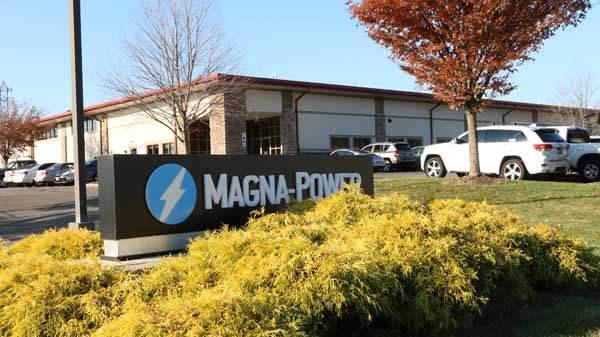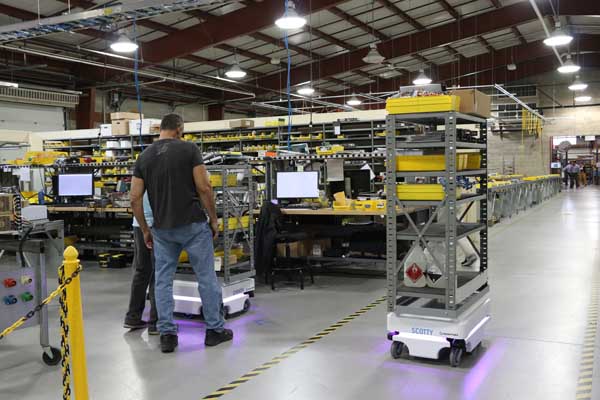Mobile Industrial Robots (MiR), a developer and manufacturer of autonomous mobile robots sold in 33 countries, has released a new case study with its customer Magna-Power, a manufacturer of programmable power products for industrial and research applications around the world. The Magna-Power application is a prime example of the value that is driving MiR’s tremendous growth to more than 200 mobile autonomous robots installed around the world in 2016, in environments from mid-sized, regional organizations through large global manufacturers.

Mobile robots aid global competitiveness
Every Magna-Power product is made to order, but the company has still developed one of the shortest lead-times in the industry to stay competitive in global markets. Because every minute counts, Magna-Power looked for a robotic system to help its employees on the manufacturing floor become more efficient. What it found was the MiR100, a collaborative, autonomous robot from Mobile Industrial Robots that has given Magna-Power a competitive advantage by automating material transportation so employees can focus on more important, high-level activities.
Initially, Magna-Power implemented just one MiR100 to manage the transportation of parts and assemblies throughout the manufacturing facility, but within only weeks of the installation, the company saw so much value it decided to add a second robot. The two robots—nicknamed Scotty and Chekov—are programmed to run “bus routes” throughout the facility, from the stockroom to each manufacturing operation. Stockroom employees kit and load bins on the robots’ top module shelving, and the robots move to each of their programmed checkpoints where employees can pause the robot to unload kits and load finished assemblies to go back to inventory. Once the robot returns to the stockroom, it automatically connects to its charging station while being reloaded so it can stay on the job all day long.
Added efficiencies and easy programming result in fast ROI, within one year
Before the mobile robots, not only were employees spending hours moving materials from one department to another, but there were additional inefficiencies as well. There was often a backlog at the stockroom window as multiple employees tried to deliver or access parts. And while stockroom employees did their best to kit all the material for a particular job, sometimes parts were missing or weren’t ready at the time of kitting, which required an employee to later hand-deliver one or two parts at a time. It was often challenging to manage how many people were in the stockroom building kits of parts for each sub-assembly versus being out making deliveries, or to know how long those deliveries would take. Now, employees simply load up the robot and move on to kitting the next project.
“MiR’s user-friendly, web-based interface and its drag-and-drop programming allowed us to get the robots up and running – literally within minutes,” said Grant Pitel, Magna-Power’s vice president of engineering. “We expect the robots to pay for themselves within a year, freeing the equivalent of three employees from low-value work, so it was an easy business decision to make.”
MiR100’s unique capabilities make it considerably more flexible, efficient and cost-effective than traditional automated guided vehicles (AGVs). Innovative technology and a repayment period of less than a year set it apart from other transport logistics solutions on the market. Instead of having to build tracks on the floor for the robot to get from point A to point B, the highly adaptable MiR100 navigates safely around obstacles in a dynamic environment. On average, MiR100s drive 4.6 miles per day and can carry up to 220 pounds.
“As many North American manufacturers work to stay ahead of low-cost overseas competitors, they’re looking for new ways to be innovative on the manufacturing floor,” said Ed Mullen, vice president of sales, North America. “Our robots help organizations from smaller, regional manufacturers such as Magna-Power through large international manufacturers save time by streamlining resources and increasing efficiency.”


Test running, chaussures, montres cardio gps et habits sports














